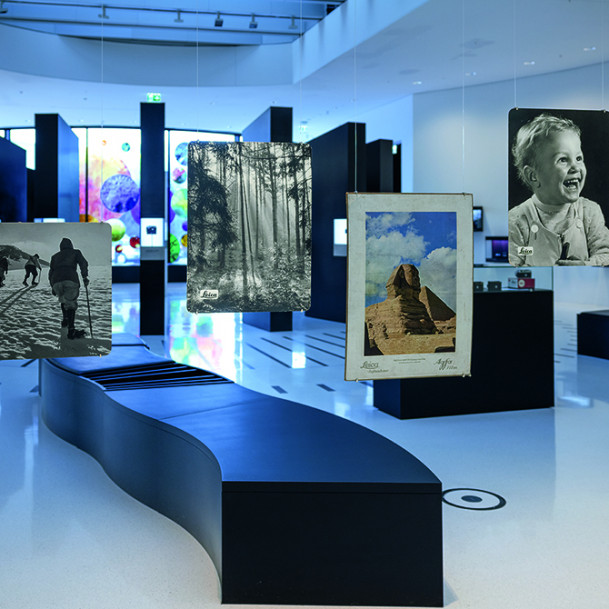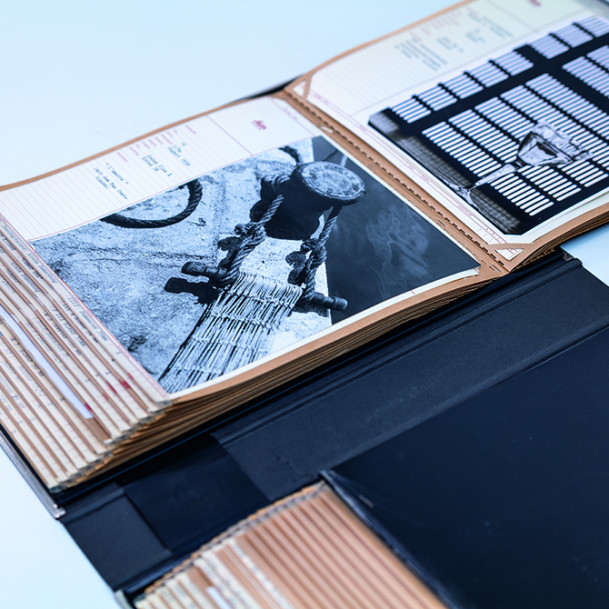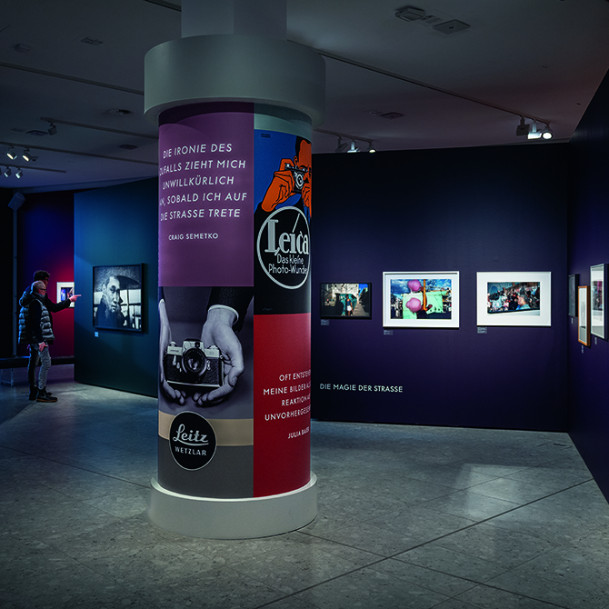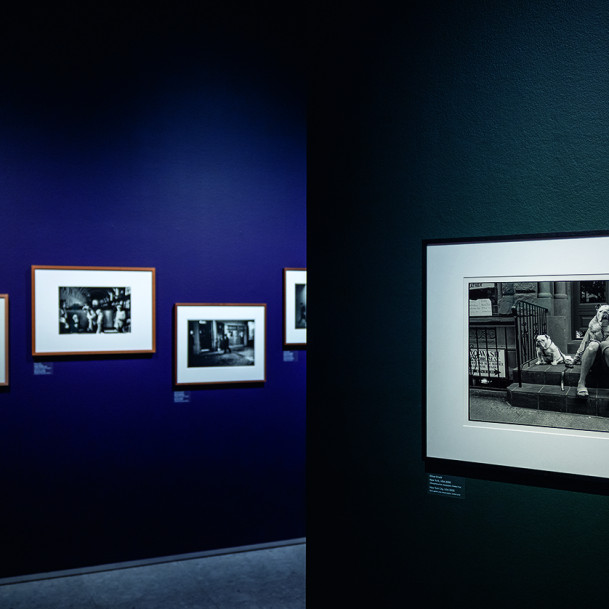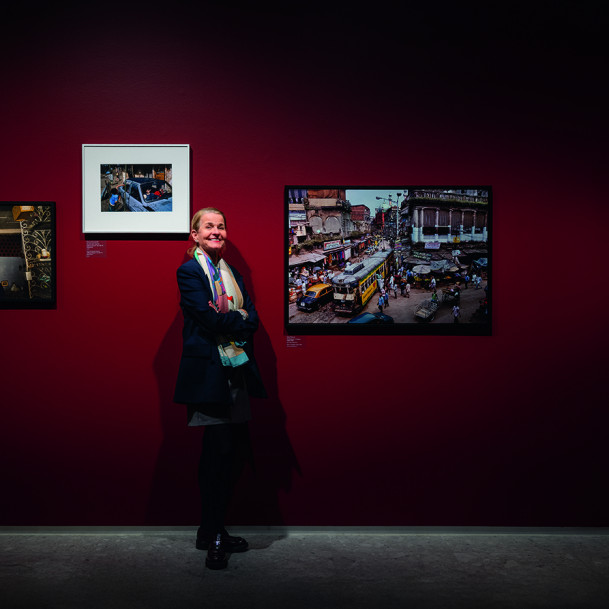100 Years of Leica I
First presented to the public at the Leipzig Spring Fair in March 1925, the Leica I revolutionized the world of photography in the process. It was the beginning of a success story that is now commemorated by the company under the motto “100 Years of Leica I: Witness to a Century”.
The birth of the Leica marks a milestone in the history of photography. However, it was anything but a precipitate delivery. Oskar Barnack designed the first small format camera, the Ur-Leica, in 1914. Due to the First World War and the subsequent world economic crisis, it took 10 years, before – in June 1924 – Ernst Leitz II announced his bold decision: “I herewith decide that we will take the risk.” When the Leica I was presented to the public at the Leipzig Spring Fair on March 1st, 1925, the professional circle was all eyes and marveled at such a small camera. The magazine “Photofreund” reported sort of live from the trade fair in such a manner: “The ‘Leica’ is precision at work, this turn of phrase might not even be exact enough, rather, it would be fair to say: this camera is a clockwork. The pieces engage with each other, very precisely, absolutely on point, inevitably, and functionally.”
The epitome of a completely novel camera system
The Leica I was indeed not only a new “handy” photographic camera – with its 35 mm format, it marks the epitome of a completely novel camera system. The compact camera enabled photographers to take pictures without any great setup and almost unnoticed. On one roll-film, they had 36 photos at their disposal. Optics with stellar lens speeds allowed them to shoot photographs without a flash. For the first time, a camera made it possible to take pictures of the real life and to record the “decisive moment” as Henri Cartier-Bresson later put it. There were also other renowned photographers, such as Alexander Rodtschenko, André Kertész, and Gisèle Freund, who immediately recognized the possibilities of the compact and powerful Leica. In the first year, Leitz-Werke already sold about 1,000 cameras. In 1930, the annual production had even surpassed 20,000 pieces.
By continuously developing the Leica I further and by extending the system with an innovative interchangeable lens design, the success of the Leica camera system took off in the following years. 1930 saw the launch of the first Leica camera with screw-on bayonet and three interchangeable lenses. In 1932, the Leica II was already equipped with a range-finder for fast and precise focusing. At that time, there were already seven interchangeable lenses available with standardized screw-on bayonet. “This is revolutionary for the work of the professional photographer,” wrote Gisèle Freund. But the photographer also called to mind that there were still quite many editors of the illustrated press in the 1930s who were skeptical about the Leica.
Commercial success as a result of enormous development efforts
She shared this experience with Thomas McAvoy, one of the first photographers of the legendary magazine “Life”: “I had brought back a Leica from a trip to Europe but due to its small format, the editor-in-chief regarded it as an unnecessary toy and didn’t allow me to use it. During an official function in Washington, I just ignored the interdiction and shot a whole series of pictures under the astonished eyes of my colleagues who were wielding big cameras and were equipped with flashlights. When my editor-in-chief compared my photographs with those of the others, he had to admit that my pictures had a lot more atmosphere and were much more energetic, exactly because I had not used a flashlight and had thus been able to photograph people without them noticing. From this moment on, the Leica was accepted, and all photographers followed my example.”
That is to say, the commercial success of the Leica and thus of the 35 mm photography was anything but granted. It was the result of some enormous development efforts by the company: in-house, significantly driven forward by Ernst Leitz II, Oskar Barnack, and Max Berek who were constantly developing new innovations in close exchange with the Leica photographers of the time; but also in networking with the big photochemistry companies as the innovators of better and better film material. It thus took more than seven years after the introduction of the Leica until a noticeably more sensitive and at the same time finer-grained black-and-white film became available with Agfa’s Isochrome film in 1932. Only then was it possible to demonstrate the actual performance capability of the Leica by means of razor-sharp enlargements in the formats 30 x 40 cm and bigger.
“Proofs of performance” from the Leica archive
Those “proofs of performance” were instrumental in contributing to the breakthrough of the Leica and the 35 mm photography. Such prints illustrated in an impressive way what the Leica cameras were capable of. These “proofs of performance” have been carefully stored in the Leica archive – and will be presented to a broad public in the Leica Galerie Wetzlar for the first time in celebration of the 100th anniversary. The exhibition “The Good Picture” comprises more than 50 works by the classics of Leica photography, such as Thomas Hoepker, Frank Horvat, Toni Schneiders, and Erich Angenendt, but also by Leica representatives such as Horst H. Baumann, Peter Cornelius, and Hans Silvester. In addition, there is ample opportunity to rediscover rather unknown Leica photographers such as Julius Behnke, Lothar Klimek, Siegfried Hartig, or Hans Cordes. Apart from the classically framed pieces, several of the collected “proofs of performance” are presented in their original form on index cards in order to provide deeper insights into the diversity of the Leica archive. In addition to that, the exhibition will be enriched by a number of “enlarged photos on loan” which were displayed as Leica advertising material in camera shops or at trade fairs.
This exhibition is clearly a tribute to the Leica camera from an analogous and particularly black and white era. It also reflects the importance of a close cooperation with the leading photographers of the respective period as well as countless amateurs and Leica enthusiasts. Today, their photos come together quite naturally in the Leica archive: They range from photojournalism to architectural photography, from portrait photos and still lives to the so-called “street photography”.
“Street Magic: Masterpieces of street photography”
It doesn’t come as a surprise that the exhibition in the Ernst Leitz Museum opposite, titled “Street Magic: Masterpieces of street photography”, can draw lavishly upon the collection of the Leica archive. After all, some of the best street photography pictures were shot with Leica cameras: in the thick of life, fully involved instead of just nearby, at the decisive moment. The who’s who of photographic history is gathered at the show: big names such as Henri Cartier-Bresson, René Burri, Elliott Erwitt, or Alexander Rodtschenko, Dr. Paul Wolff, and Marc Riboud are among them as well as Martine Franck, Joel Meyerowitz, and Steve McCurry, to highlight just a few. Another emphasis was placed on more recent items of street photography as represented among others by Julia Baier, Fred Mortagne, or Matt Stuart. The street is everywhere. And the Leica is always along for the ride – no matter if in Berlin or in Brussels, in New York or in Delhi, from a bird’s eye view or from barely above the pavement at eye level with a dog.
During the whole anniversary year, Leica’s festivities and events will be just as multi-faceted as this opening. “Das Wesentliche”, as Dr. Andreas Kaufmann, Chairman of the Supervisory Board of Leica Camera AG, points out, will always be the essential point: “a passion for taking unique, authentic pictures, documenting and preserving world events. For this reason, it only makes sense to celebrate this company anniversary, namely 100 years of camera production, together with many renowned photographers worldwide and to put the spotlight on their work.”
Celebrations all over the globe – but especially in Wetzlar
To mark the anniversary, there will be special exhibitions all over the globe, something specific at each location: in Shanghai, there will be an exhibition about Chinese photographers; in New York, American photographers will be on display in an outdoor exhibition. 12 exhibitions will be shown in 12 selected Leica galleries where young male and female photographers are entering into dialog with a Leica Hall of Fame winner: in Frankfurt, these are Walter Vogel and Franziska Stünkel, in Vienna Barbara Klemm and Lena Mucha. But the main celebrations will be taking place in Wetzlar where Leica is still deeply rooted. The last week of June is to become a real week of festivities: One highlight will be the great exhibition of Joel Meyerowitz which opens on June 26th. Some prominent figures of the Leica Community, such as Steve McCurry, Andy Summers, and Ralph Gibson have announced their coming. An independent movie focusing in particular on people who have worked with Leica cameras will see its premier there. And all that for one special camera which revolutionized the world of photography 100 years ago.
www.leica-camera.com
Leica Camera
With innovative products and the investment in future-oriented technologies, Leica Camera AG continuous to prolong their entrepreneurial success story which commenced with the Leica I. By now, the product portfolio ranges from high-quality cameras, lenses, and sporting optics to the first Laser TV Projector of Leica production and the Leica ZM Watch Collections. Most recently, in February, an innovative camera grip was introduced with the Leica LUX Grip which makes for an exceptional photographic experience with the iPhone.

